Kingdom Fungi Higher classification Inonotus | Division Basidiomycota Genus Inonotus Rank Species | |
Similar Inonotus, Lingzhi mushroom, Birch, Cordyceps, Lion's mane | ||
Foraging for chaga inonotus obliquus www returntonature us
Inonotus obliquus, commonly known as chaga mushroom (a Latinisation of the Russian term 'чага'), is a fungus in the family Hymenochaetaceae. It is parasitic on birch and other trees. The sterile conk is irregularly formed and has the appearance of burnt charcoal. It is not the fruiting body of the fungus, but a sclerotia or mass of mycelium, mostly black because of the presence of massive amounts of melanin. The fertile fruiting body can be found very rarely as a resupinate (crustose) fungus on or near the clinker, usually appearing after the host tree is dead. I. obliquus grows in birch forests of Russia, Korea, Eastern and Northern Europe, northern areas of the United States, Alaska, in the North Carolina mountains and in Canada.
Contents
- Foraging for chaga inonotus obliquus www returntonature us
- True tinder fungus chaga inonotus obliquus
- Alternative names
- Medicinal research
- Cultivation
- Preparation
- References
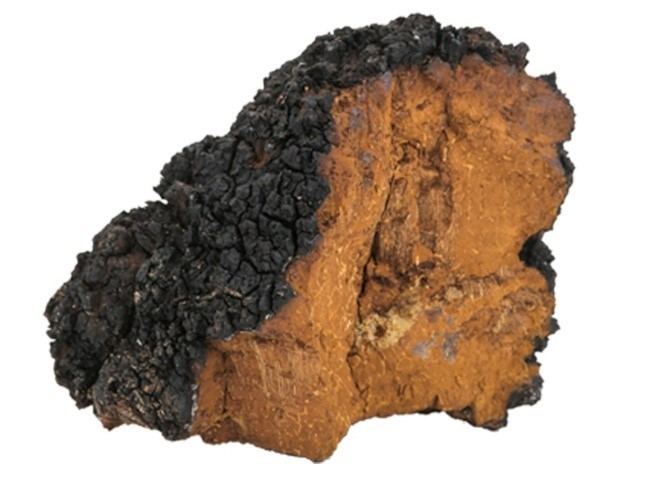
The chaga mushroom is considered a medicinal mushroom in Russian and Eastern European folk medicine.
True tinder fungus chaga inonotus obliquus
Alternative names
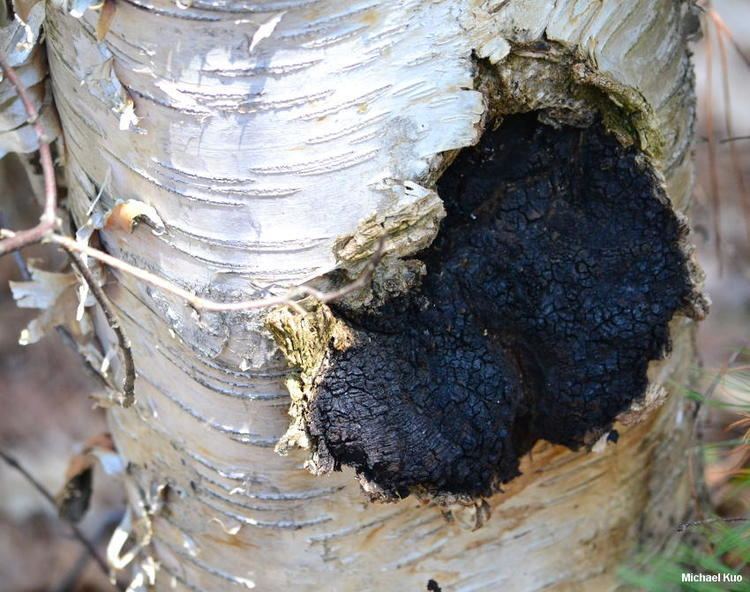
The name chaga (/ˈtʃɑːɡɑː/ ) comes from the Russian word of the mushroom (anglicized from чага), which in turn is purportedly derived from the word for the fungus in Komi-Permyak, the language of the indigenous peoples in the Kama River Basin, west of the Ural Mountains. It is also known as the clinker polypore (from its resemblance to the slag left after a coal fire, known commonly as a "clinker" when coal fires were common), cinder conk, black mass and birch canker polypore.
In Norwegian, the name is kreftkjuke which literally translates as "cancer polypore", referring to the fungus' appearance or to its alleged medicinal properties. In Finnish, the name is pakurikääpä.
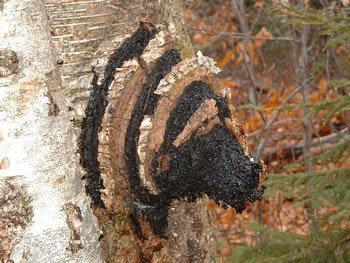
In England and Canada, it is known as the sterile conk trunk rot of birch, which refers to the fruiting bodies growing under the outer layers of wood surrounding the sterile conk once the tree is dead, to spread the spores. In France, it is called the carie blanche spongieuse de bouleau (spongy white birch tree rot), and in Germany it is known as Schiefer Schillerporling (oblique Inonotus). The Dutch name is berkenweerschijnzwam (birch glow mushroom).
Medicinal research
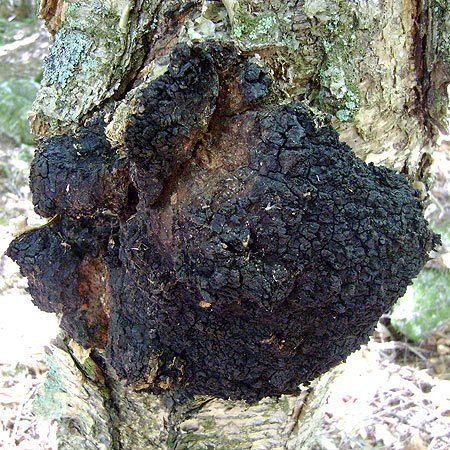
Chaga has been used as a folk remedy in Russia and other North-European countries for centuries and it featured in Aleksandr Solzhenitsyn's 1967 novel Cancer Ward. However, according to the Memorial Sloan Kettering Cancer Center, "no clinical trials have been conducted to assess chaga's safety and efficacy for disease prevention or for the treatment of cancer, cardiovascular disease, or diabetes".
Cultivation
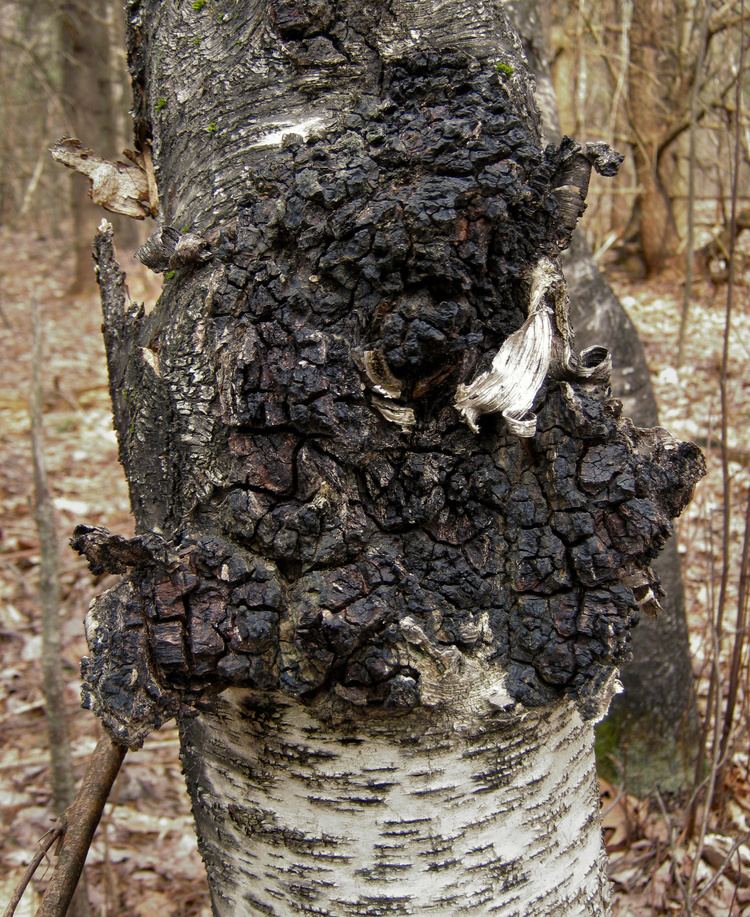
Geographically this fungus is mostly found in very cold habitats. It grows very slowly. Attempts at cultivating this fungus on potato dextrose agar and other simulated mediums resulted in a reduced and markedly different production of bioactive metabolites. Secondary metabolites were either absent or present in very different ratios, and in general showed significantly less potency in submerged cultures of Chaga. Cultivated Chaga furthermore results in a reduced diversity of phytosterols, particularly lanosterol, an intermediate in the synthesis of ergosterol and lanostane-type triterpenes. This effect was partially reversed by the addition of silver ion, an inhibitor of ergosterol biosynthesis.
Additionally, the bioactive triterpene betulinic acid is completely absent in cultivated Chaga. In nature Chaga grows predominantly on birches, and birch bark contains up to 22% of betulin. Betulin is poorly absorbed by humans, even when taken intravenously; its bioavailability is very limited. However, the Chaga mushroom converts betulin into betulinic acid, and many internet sources state Chaga's betulinic acid is bioavailable, even when taken orally. There is, however, no research that confirms this claim.
Preparation
Chaga is traditionally grated into a fine powder and used to brew a beverage resembling coffee or tea. For medicinal use, an extraction process is needed to make at least some of the bio-active components bioavailable. These bio-actives are found in the mostly indigestible chitin cell walls of the chaga. Humans lack the enzyme chitinase, so cannot fully digest raw mushrooms or their derivatives, and the digestive process works too fast for the stomach acid to take effect. Scientific studies and research are in general also based on highly concentrated extracts, and traditional Russian usage is also based on a form of hot-water extraction (by preparing zavarka).
Currently, three extraction processes are used, each with a different outcome.
All water-soluble components will be present in the resulting extract. Hot water extraction performed without high pressure can be compared to a traditional tea-making process; the therapeutic potential will be limited because of the damage caused by the high temperature, as described above. Water-insoluble components, such as phytosterols, betulinic acid and betulin, will be absent in a hot water extract. Several extraction rounds combined with modern pharmaceutical techniques such as alcohol precipitation as a final step can result in high levels of polysaccharides, up to almost 60%. The ß-D-glucans, the bio-active part of these polysaccharides, might add up to ±35% in a very pure extract. Polyphenolic components are water-solubles and will also be present.
Combining the outcome of hot water and ethanol extraction yields a dual extract with all therapeutically interesting bioactives present in a bioavailable form. Cheap, mass-produced extracts are in general hot water, low percentage (4-20%) polysaccharide extracts with limited therapeutic value. The information on the supplements' label will usually reveal inclusion or exclusion of components. However, the majority of mushroom dietary supplements that are sold are non-extracted, being the cheapest option. To achieve at least some therapeutic effects the consumer has to make a tea from it.
